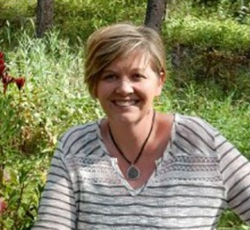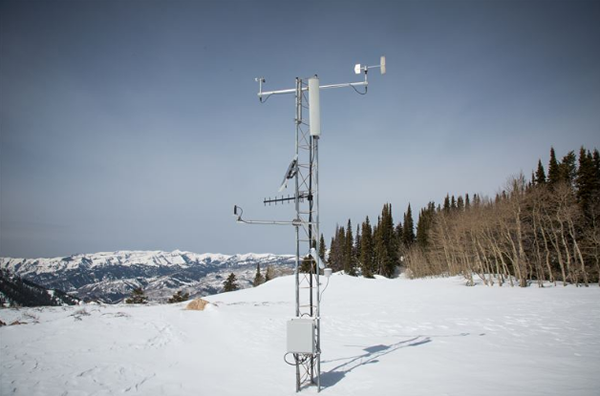News and Highlights
This is a list of past iUTAH EPSCoR news from 2012 to 2018.
June 5, 2017
Data Management Survey for iUTAH Researchers
The iUTAH EPSCoR project has been approved for a one-year no cost extension, beginning in August 2017. This means that the project office will remain open, at a reduced capacity, to help with the administration, distribution, and communication of research that will be completed in the coming year. One of the areas of emphasis for researchers during the extension is to meet our program requirements for sharing data and research products. To help us know what to expect from you in the coming months, we ask that you respond to a short 3-minute survey.
Your response to the Data Management Survey confirms your commitment to the requirements of this award, and will let us know that you are on track with your data management objectives. For questions or clarification on data management, please see either Data Policies and Collection Plans or Steps for Sharing/Publishing to HydroShare.
Researchers, both faculty and student, we ask that you complete this survey as part of your commitment to iUTAH's program requirements for sharing data and research products. Go to survey.

May 25, 2017
Weather Patterns' Influence on Frost Timing

University of Utah and iUTAH researcher Court Strong has been in the news for his contributions to research on weather patterns.
A media release provided by the University of Utah’s science writer Paul Gabrielsen said, “The frost-free season in North America is approximately 10 days longer now than it was a century ago. In a new study, published in Nature Communications, researchers from the University of Utah and the U.S. Geological Survey parse the factors contributing to the timing of frost in the United States. Atmospheric circulation patterns, they found, were the dominant influence on frost timing, although the trend of globally warming temperatures played a part as well.
‘The frost-free season has been lengthening over the past century, and now we understand the changes in atmospheric circulation that are extremely strong in frost timing, even stronger than global warming,’ says University of Utah atmospheric sciences professor Court Strong.
Weather and climate are complex systems, with many factors affecting what the particular weather conditions might be in a certain place at a certain time. Previous research, says Gregory McCabe, of the USGS in Denver has focused on the role of large-scale phenomena like El Niño. ‘I don’t think anyone has broken it down to look at the circulations patterns specific to the timing of frost,’ McCabe says.”
Press: Popular Science | EurekaAlert! | Science Daily | Phys.org | Weather Underground | KUER Radio | KUSU Radio | UNews



May 24, 2017
Partnerships Key to Water Data Management Statewide
Courtney Flint, iUTAH team leader, and a professor of sociology at Utah State University, recently published an op-ed piece in The Salt Lake Tribune. In it, she discusses iUTAH’s collaborations with state agencies, Weber Basin Water Conservancy District, and municipalities from Salt Lake, Cache, and Heber Valleys. She starts the piece by pointing out “A recent article and an editorial in The Salt Lake Tribune have cast doubt on the ability of Utah state agencies to accurately measure water use.
Our interactions with state agency staff suggest that they are interested in improving the availability of water use data, but have been limited mostly by state legislative funding allocations and restrictions on their authority to require submission of timely and accurate data.
As water resource researchers with iUTAH, a federally funded water project led by Utah State University researchers in collaboration with partners around the state, we would be the first to join others in saying that the better we know how water is distributed and used, the better we can help our state manage its water resources and achieve future water sustainability. Yet it is often municipalities, water districts and irrigation companies that actually make many of the critical water infrastructure development and distribution decisions.”

May 23, 2017
"E" in EPSCoR changed from Experimental to Established
A name change has been announced for the federal Experimental Program to Stimulate Competitive Research programs, known as EPSCoR. The American Innovation and Competitiveness Act (AICA) (S. 3084) passed in January renames the programs as the Established Program to Stimulate Competitive Research (EPSCoR) and revises program requirements.
Effective immediately, iUTAH EPSCoR now stands for innovative Urban Transitions and Aridregion Hydro-sustainability Established Program to Stimulate Competitive Research. The name change will be reflected on the project’s website, communications, and publications in the near future.
iUTAH EPSCoR is an interdisciplinary research, training, and education program aimed at strengthening science on vital environmental issues facing our state, specifically water sustainability. We partner with the National Science Foundation EPSCoR program to develop and manage strategic projects funded by competitive NSF EPSCoR awards to the state.


May 23, 2017
News Media Seek Sociologist's View on EPA Move Reducing Scientific Oversight

iUTAH researcher Courtney Flint was at the center of a “barrage of emails and calls from news reporters worldwide seeking her opinion of news that she would no longer be on a scientific board that advises the Environmental Protection Agency.”
A media release provided by Utah State University writer Janelle Hyatt said “Flint, a natural resource sociologist and professor in the Department of Sociology, Social Work and Anthropology, has been on the Board of Scientific Counselors of the EPA since 2014. In this position, she and her fellow scientists, who are among the top academic experts in the country, review the science upon which EPA regulations are developed and implemented.
Newly appointed EPA administrator Scott Pruitt recently announced that it would not be extending terms for some members of the 18-person board because of budget cuts and the fact that the EPA, according to a spokesman, wants to include more input from industry representatives who 'understand the impact of regulations.'
The EPA’s action has garnered wide attention for what the Washington Post calls 'the latest in a series of moves that could benefit industries whose pollution the government regulates.' As one of the five scientists targeted, Flint’s comments have been reported by the New York Times, the Washington Post and the Guardian. She’s given interviews to the Associated Press, Bloomberg, weather.com, ABC, CBC Radio Canada, Frontline, CNN and others.”
For more on Flint’s interviews, covered in over 95 news media outlets across the globe, visit one of the press links below.
Press: New York Times | Washington Post | The Guardian | CNN | SFGate |The Denver Post | The Telegraph | The Atlantic | New Republic | The Herald Journal | Utah State Today
May 4, 2017
Snowmelt Raises Great Salt Lake
iUTAH researchers Scott Jones and Simon Wang were asked how much recent snowfalls might contribute to raising the Great Salt Lake. Here’s what they had to say to reporter Leia Larsen, in an excerpt from the April 21 article in the Standard Examiner:
“Snowpack levels in the river basins feeding Utah’s largest terminal lake hit between 157 percent and 172 percent of normal by March. The snowy winter followed four years of drought. Water levels in the Great Salt Lake dropped to near-record lows while raising concerns about impacts on air quality, migrating birds and the future of lake-based businesses. As of last week, the Great Salt Lake’s south arm sat at nearly 4,195 feet, nearly a foot higher than the same time last year. Meanwhile, the top of Logan Canyon — part of the Bear River Basin — had 9.5 feet of snow and the equivalent of around five feet of water, a positive sign that the lake could continue to rise.
‘What does the Great Salt Lake mean? It’s kind of an indicator of what’s going on around it,’ said Scott Jones, a professor of environmental soil physics at Utah State University, during a recent snow survey. ‘We have wet years and dry years, and the Great Salt Lake shows to some degree when those happen.’
USU’s Utah Climate Center has taken historical data of the lake levels along with tree-ring data to model the lake’s fluctuating levels going back hundreds of years. Combing that with historical coral data from the Pacific, they’re able to make predictions on when the lake will rise and fall. That helps water managers prepare for future years of drought and surplus. ‘By predicting lake level, you’re predicting climate,’ said Simon Wang with the Utah Climate Center.”
The article also included Great Salt Lake water level and predictions for the future, and even a photo of iUTAH’s ‘Gradients Along Mountain to Urban Transitions’ GAMUT climate station located in the T.W. Daniel Experimental Forest above Logan Canyon.
Press: Standard Examiner | Snow Survey Podcast





